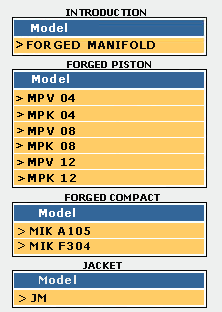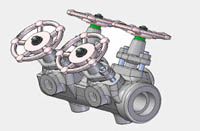 PAGE 1 2 3 4 5 6 7 8 9 |
|||||||||||||||||||
| ADVANTAGES OF THE PISTONS VALVE: - EASY MANOEUVRING: that piston valve has a smooth manoeuvrability, unlike the valves with metal – to – metal sealing, that require strength to be closed, especially in presence of dirty fluids. - HAS A WIDE SEALING SURFACE: this is the inner surface of the rings, and acts directly onto the piston surface ; its sealing surface, wider than the one of any other type of conventional valves, makes the PISTON VALVE suitable for the most severe services. - IT IS SELF – COMPENSATING: the spring washers assembled under the nuts keep a constant load on the graphite rings, thus compensating any pressure or temperature variation and providing the best and lasting sealing of the valve both in cut off of fluid and toward the atmosphere . - EASY MAINTENANCE: removalof the valve body from the line is not necessary ; it is enough to loose the bonnet nuts, remove the bonnet and replace both the upper and lower rings to bring the valve in an " as new " condition. It greatly reduces the operating cost and eliminates any machining operation to restore seat and disc. - NO EROSION OR DAMAGING OF THE SEALING COMPONENTS – SELF CLEANING EFFECT: when the valve is open, only the lower face of the piston is in contact with the fluid, thus the sealing surface, not in contact with the fluid, can not be erode. When the valve is closed and the piston is inserted into the lower ring, solid particles or impurities, in the fluid are removed from the inner surface of the lower ring so that these impurities, detrimental to the valve sealing, can not accumulate, and damage the surface of the piston. - QUICK RE – TIGHTENING: should a leak toward atmosphere occur, it is enough to tighten the nuts over the spring washers to restore a perfect sealing. |
|||||||||||||||||||
 |
|||||||||||||||||||
OTHER POSSIBILE UTILIZATIONS OF THE MANIFOLD The MANIFOLD, in addition to be used in the chemical and petrochemical industry, can be advantageously utilized both for steam distribution and condensate collection, anywhere steam in used. |
|||||||||||||||||||